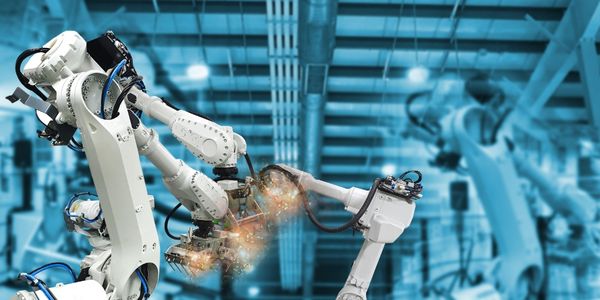Maximizing Material Temperature Capability in Pressure Equipment Design: A Case Study of ISGEC Hitachi Zosen Limited

Technology Category
- Sensors - Environmental Sensors
- Sensors - Torque Sensors
Applicable Industries
- Equipment & Machinery
- Life Sciences
Use Cases
- Onsite Human Safety Management
- Structural Health Monitoring
About The Customer
ISGEC Hitachi Zosen Limited is a market-leading manufacturer of complex pressure vessels and heat exchanger equipment. The company serves customers all over the world, providing solutions for a variety of industry segments in which it is a manufacturing leader. ISGEC Hitachi Zosen Limited also assists in reducing the scale-up risks from lab to plant, demonstrating its commitment to innovation and customer satisfaction. The company's focus on utilizing the maximum temperature capability of materials for the design of structural components in the oil and gas sector underscores its dedication to cost-effective and efficient design solutions.
The Challenge
ISGEC Hitachi Zosen Limited, a leading manufacturer of complex pressure vessels and heat exchanger equipment, was faced with the challenge of utilizing the maximum temperature capability of materials for the design of structural components in the oil and gas sector. The current ASME code (Section VIII, Division 2) limits the generation of fatigue curves up to a maximum of 371 °C. However, manufacturers wanted to use ASME Code Case 2605, a special rule for fatigue evaluation of 2.25Cr-1Mo-0.25V steels at temperatures greater than 371 °C and less than 454 °C. The challenge was to carry out full inelastic analysis, such as ratcheting elastic shakedown analysis, using the actual time-dependent thermal and mechanical loading histograms. The existing methods of treating plasticity and creep as two independent phenomena in stress and strain calculations using spreadsheet-like applications were subject to human error and could lead to unrealistic damage parameters.
The Solution
ISGEC Hitachi Zosen engineers, with the help of ANSYS technical team members, used the user programmable feature (UPF) in ANSYS MAPDL to implement a Code Case 2605 creep model. This model was designed to analyze creep at the higher temperatures specified in Code Case 2605. By combining user creep with standard plasticity material models already available in ANSYS solutions, they were able to calculate the overall creep strain and creep damage under cyclic loading conditions at temperatures up to 454 °C. This solution not only increased the accuracy of the calculations but also accelerated the calculation process. The implementation of the creep subroutine for the calculation of creep damage and creep strains for chrome-moly steels eliminated the chances of human error common in manual spreadsheet calculations.
Operational Impact
Quantitative Benefit

Case Study missing?
Start adding your own!
Register with your work email and create a new case study profile for your business.
Related Case Studies.

Case Study
Smart Water Filtration Systems
Before working with Ayla Networks, Ozner was already using cloud connectivity to identify and solve water-filtration system malfunctions as well as to monitor filter cartridges for replacements.But, in June 2015, Ozner executives talked with Ayla about how the company might further improve its water systems with IoT technology. They liked what they heard from Ayla, but the executives needed to be sure that Ayla’s Agile IoT Platform provided the security and reliability Ozner required.

Case Study
IoT enabled Fleet Management with MindSphere
In view of growing competition, Gämmerler had a strong need to remain competitive via process optimization, reliability and gentle handling of printed products, even at highest press speeds. In addition, a digitalization initiative also included developing a key differentiation via data-driven services offers.

Case Study
Predictive Maintenance for Industrial Chillers
For global leaders in the industrial chiller manufacturing, reliability of the entire production process is of the utmost importance. Chillers are refrigeration systems that produce ice water to provide cooling for a process or industrial application. One of those leaders sought a way to respond to asset performance issues, even before they occur. The intelligence to guarantee maximum reliability of cooling devices is embedded (pre-alarming). A pre-alarming phase means that the cooling device still works, but symptoms may appear, telling manufacturers that a failure is likely to occur in the near future. Chillers who are not internet connected at that moment, provide little insight in this pre-alarming phase.

Case Study
Premium Appliance Producer Innovates with Internet of Everything
Sub-Zero faced the largest product launch in the company’s history:It wanted to launch 60 new products as scheduled while simultaneously opening a new “greenfield” production facility, yet still adhering to stringent quality requirements and manage issues from new supply-chain partners. A the same time, it wanted to increase staff productivity time and collaboration while reducing travel and costs.

Case Study
Integration of PLC with IoT for Bosch Rexroth
The application arises from the need to monitor and anticipate the problems of one or more machines managed by a PLC. These problems, often resulting from the accumulation over time of small discrepancies, require, when they occur, ex post technical operations maintenance.

Case Study
Robot Saves Money and Time for US Custom Molding Company
Injection Technology (Itech) is a custom molder for a variety of clients that require precision plastic parts for such products as electric meter covers, dental appliance cases and spools. With 95 employees operating 23 molding machines in a 30,000 square foot plant, Itech wanted to reduce man hours and increase efficiency.


